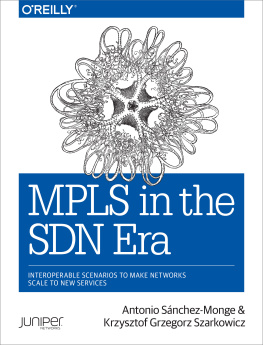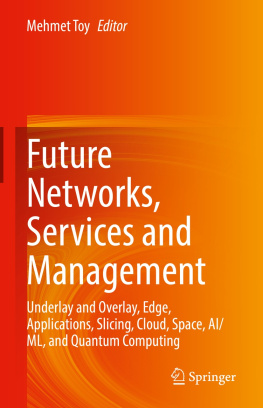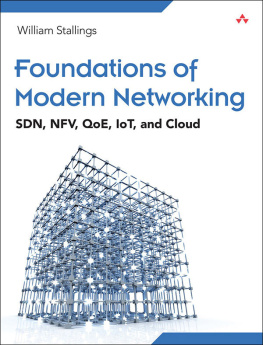Antonio Sanchez Monge - MPLS in the SDN Era: Interoperable Scenarios to Make Networks Scale to New Services
Here you can read online Antonio Sanchez Monge - MPLS in the SDN Era: Interoperable Scenarios to Make Networks Scale to New Services full text of the book (entire story) in english for free. Download pdf and epub, get meaning, cover and reviews about this ebook. year: 2016, publisher: OReilly Media, genre: Romance novel. Description of the work, (preface) as well as reviews are available. Best literature library LitArk.com created for fans of good reading and offers a wide selection of genres:
Romance novel
Science fiction
Adventure
Detective
Science
History
Home and family
Prose
Art
Politics
Computer
Non-fiction
Religion
Business
Children
Humor
Choose a favorite category and find really read worthwhile books. Enjoy immersion in the world of imagination, feel the emotions of the characters or learn something new for yourself, make an fascinating discovery.
- Book:MPLS in the SDN Era: Interoperable Scenarios to Make Networks Scale to New Services
- Author:
- Publisher:OReilly Media
- Genre:
- Year:2016
- Rating:5 / 5
- Favourites:Add to favourites
- Your mark:
MPLS in the SDN Era: Interoperable Scenarios to Make Networks Scale to New Services: summary, description and annotation
We offer to read an annotation, description, summary or preface (depends on what the author of the book "MPLS in the SDN Era: Interoperable Scenarios to Make Networks Scale to New Services" wrote himself). If you haven't found the necessary information about the book — write in the comments, we will try to find it.
How can you make multivendor services work smoothly on todays complex networks? This practical book shows you how to deploy a large portfolio of multivendor Multiprotocol Label Switching (MPLS) services on networks, down to the configuration level. Youll learn where Juniper Networks Junos, Ciscos IOS XR, and OpenContrail, interoperate and where they dont.
Two network and cloud professionals from Juniper describe how MPLS technologies and applications have rapidly evolved through services and architectures such as Ethernet VPNs, Network Function Virtualization, Seamless MPLS, Egress Protection, External Path Computation, and more. This book contains no vendor bias or corporate messages, just solid information on how to get a multivendor network to function optimally.
Topics include:
- Introduction to MPLS and Software-Defined Networking (SDN)
- The four MPLS Builders (LDP, RSVP-TE, IGP SPRING, and BGP)
- Layer 3 unicast and multicast MPLS services, Layer 2 VPN, VPLS, and Ethernet VPN
- Inter-domain MPLS Services
- Underlay and overlay architectures: data centers, NVO, and NFV
- Centralized Traffic Engineering and TE bandwidth reservations
- Scaling MPLS transport and services
- Transit fast restoration based on the IGP and RSVP-TE
- FIB optimization and egress service for fast restoration
Antonio Sanchez Monge: author's other books
Who wrote MPLS in the SDN Era: Interoperable Scenarios to Make Networks Scale to New Services? Find out the surname, the name of the author of the book and a list of all author's works by series.











